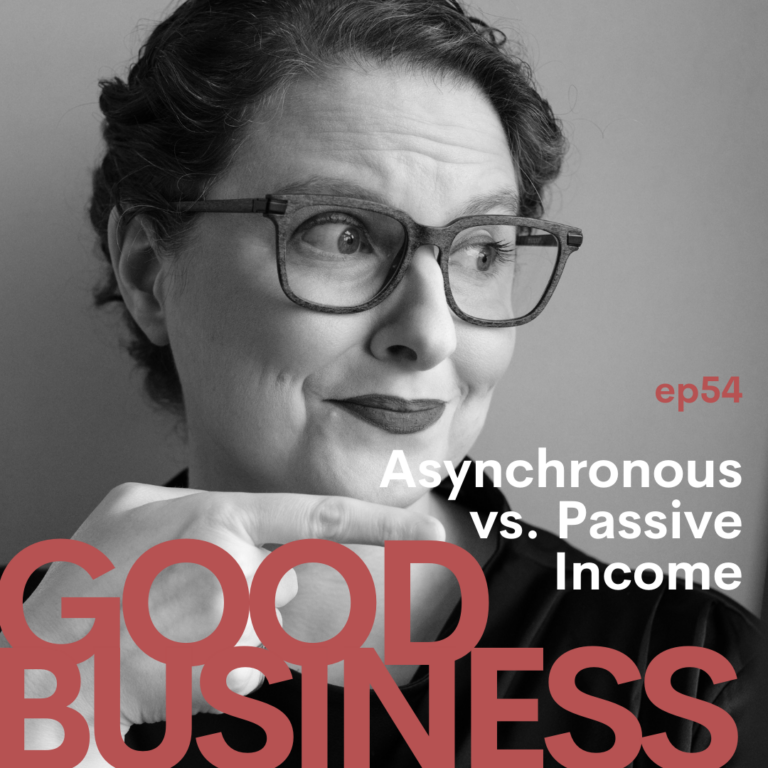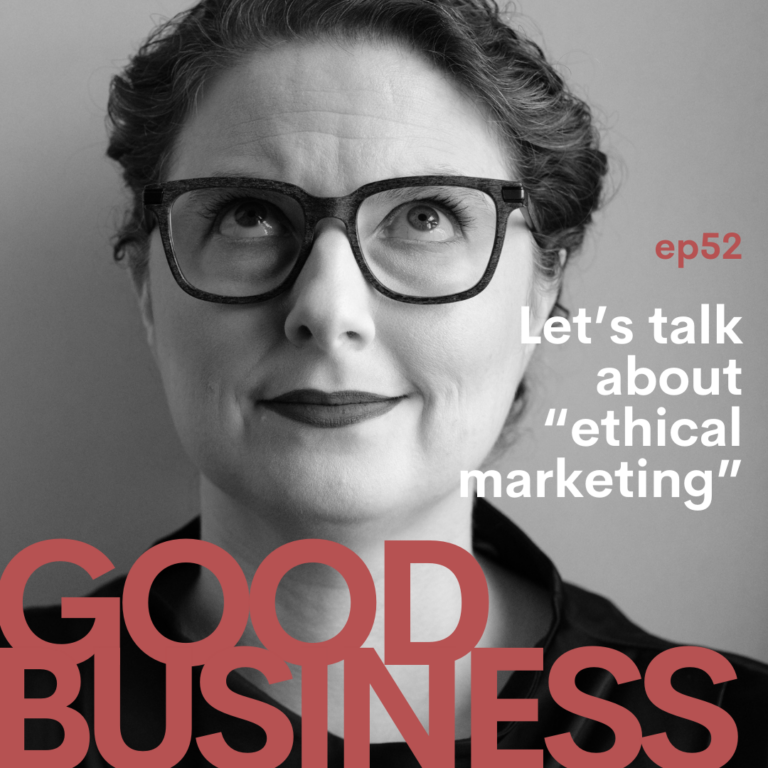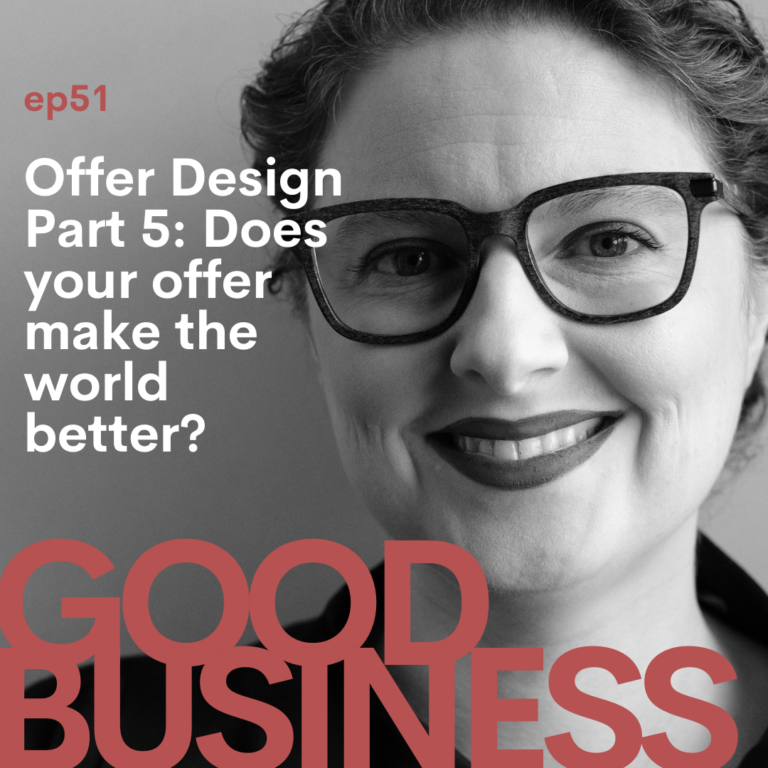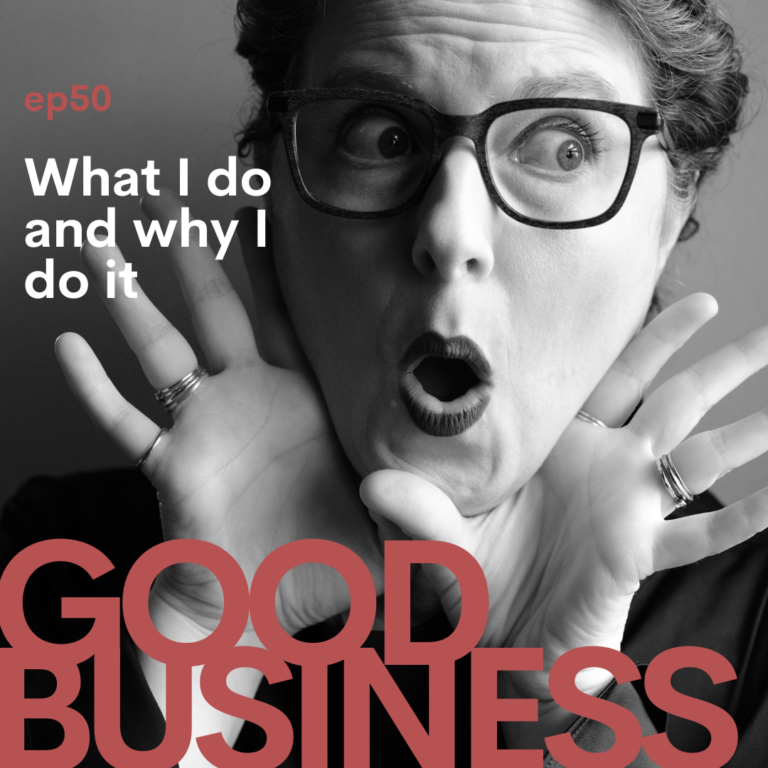In this episode of the Good Business Podcast, we dive into the critical 15 minutes that can make or break a client relationship. Want to know why these first few minutes are so crucial, what should be included, and how to adjust if any steps are missed? Through clear communication and setting mutual expectations, you can already begin building trust and cultivating a collaborative partnership with clients. By getting it right from the start, both parties can ensure a successful and fulfilling long-term relationship. Tune in to this episode to learn how to navigate the initial client interaction with finesse and set yourself up for success.
[NOTE: The transcript below was generated with the help of AI. I do not advocate for the use of AI in copywriting in general, but see it as a useful tool for improving efficient editing of my own creative content. None of the actual content of the episode or the transcript was AI-generated. I just let the computer help me clean up the text so it can be more easily understood and consumed. ~i.]
Welcome back to the Good Business Podcast! I’m your host, Illana Burk, and I’m so delighted to have you here with me today. Today, we’re talking about the 15 most important minutes of a client relationship. And I know you’re dying to know which 15 minutes we’re talking about, and I’m not going to hold you in suspense. We are talking about the first 15 minutes of your very first call or meeting with any new client.
Why are these 15 minutes so critical?
- It’s your very first opportunity to set the tone, set boundaries, and set mutual expectations.
- Getting it right means that your client’s anxieties are waylaid, which are usually higher than you might realize.
- You can set mutual expectations on both sides and build trust very quickly by showing them that you “have them.”
- Showing up and asking a client to set their expectations is different from showing up ready to create a clear partnership. A clear partnership is important for longer-term client relationships.
- Failing to set expectations up front leads to a transactional relationship, where the client is the customer and you are the purveyor. This can lead to problems down the road.
- Leading effectively right from the start validates their choice and is the first step towards keeping the promises you made.
How to make the most of the first 15 minutes:
- Keep your greetings brief.
- Take charge as quickly as possible.
- Tell them exactly how the call is going to go.
- Create an outline for yourself with bullet points including:
- What you know about the person
- Any pain points or concerns
- Red flags they might have mentioned
- Boundaries
- Policies
- Relevant pet peeves
- Common questions
- How to handle bumps in the road
- Boundaries: This is important to do with confidence and a steady voice. It sets the tone for the relationship.
- Policies: Briefly reiterate anything important from your contract.
- Relevant pet peeves: Share yours and ask about theirs. This can help you avoid pitfalls and meet their needs.
- Common questions: Address these to waylay final anxieties.
- Open the floor to how you’ll handle bumps in the road: Be clear about your process and expectations.
- Leave room for correction: Acknowledge that you might forget something and give yourself time to address it at the end.
The goal is to frame out the edges of your working relationship so the person is left with a clear sense of equity and trust. The most important thing to leave them with is that if anything goes wrong, you’ve got them and you’ll confront issues head-on.
I hope this helps you make the most of the first 15 minutes of your client relationships!
More Episodes
The Gauntlet | GB55
In this episode of The Good Business Podcast, I introduce the topic of the "Gauntlet" (sometimes also referred to as the Crucible), a stage in business where everything seems to go wrong... over and over again. This phase often...
Asynchronous Income vs Passive Income | GB54
What is "asynchronous income"? In this episode, I talk about why passive income is a total misnomer, the difference between passive and asynchronous income, and what you can find in the middle between (the myth of) passive...
You don’t have to be a commodity | GB53
How to know what you should commodify and what you shouldn't. In this episode, I address the idea that we don't actually have to become commodities in order to be successful business owners. First, I clarify what I mean by...
Let’s talk about ethical marketing | GB52
What is ethical marketing? What does it mean? What doesn't it mean? And are you afraid of the wrong thing? Lately, there's been a new flavor to the ethical marketing and selling conversation happening amongst small business...
Offer Design Part 5: Does your offer make the world better? | GB51
Does your work make the world a better place? When you think about creating an offer, do you think about the impact of what you're doing? And how do you think about it?In this episode, I talk about how to consider impact when...
What I do and why I do it | GB50
Episode 50! Today we take a small break from our series on offer design and talk about, well, what I do and why I do it. In this episode, I talk about how I got where I am today, the big why, the triple bottom line, the kind of...






